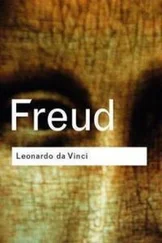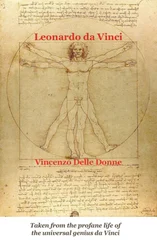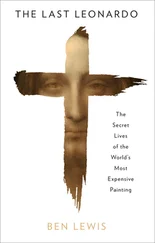Leonardo da Vinci - The Notebooks of Leonardo Da Vinci. Complete
Здесь есть возможность читать онлайн «Leonardo da Vinci - The Notebooks of Leonardo Da Vinci. Complete» — ознакомительный отрывок электронной книги совершенно бесплатно, а после прочтения отрывка купить полную версию. В некоторых случаях можно слушать аудио, скачать через торрент в формате fb2 и присутствует краткое содержание. Жанр: foreign_prose, foreign_home, visual_arts, foreign_antique, на английском языке. Описание произведения, (предисловие) а так же отзывы посетителей доступны на портале библиотеки ЛибКат.
- Название:The Notebooks of Leonardo Da Vinci. Complete
- Автор:
- Жанр:
- Год:неизвестен
- ISBN:нет данных
- Рейтинг книги:3 / 5. Голосов: 1
-
Избранное:Добавить в избранное
- Отзывы:
-
Ваша оценка:
- 60
- 1
- 2
- 3
- 4
- 5
The Notebooks of Leonardo Da Vinci. Complete: краткое содержание, описание и аннотация
Предлагаем к чтению аннотацию, описание, краткое содержание или предисловие (зависит от того, что написал сам автор книги «The Notebooks of Leonardo Da Vinci. Complete»). Если вы не нашли необходимую информацию о книге — напишите в комментариях, мы постараемся отыскать её.
The Notebooks of Leonardo Da Vinci. Complete — читать онлайн ознакомительный отрывок
Ниже представлен текст книги, разбитый по страницам. Система сохранения места последней прочитанной страницы, позволяет с удобством читать онлайн бесплатно книгу «The Notebooks of Leonardo Da Vinci. Complete», без необходимости каждый раз заново искать на чём Вы остановились. Поставьте закладку, и сможете в любой момент перейти на страницу, на которой закончили чтение.
Интервал:
Закладка:
Experimental proof of the existence of the pyramid of sight (52-55).
52
Perspective is a rational demonstration, confirmed by experience, that all objects transmit their image to the eye by a pyramid of lines.
By a pyramid of lines I understand those lines which start from the edges of the surface of bodies, and converging from a distance, meet in a single point; and this point, in the present instance, I will show to be situated in the eye which is the universal judge of all objects. By a point I mean that which cannot be divided into parts; therefore this point, which is situated in the eye, being indivisible, no body is seen by the eye, that is not larger than this point. This being the case it is inevitable that the lines which come from the object to the point must form a pyramid. And if any man seeks to prove that the sense of sight does not reside in this point, but rather in the black spot which is visible in the middle of the pupil, I might reply to him that a small object could never diminish at any distance, as it might be a grain of millet or of oats or of some similar thing, and that object, if it were larger than the said [black] spot would never be seen as a whole; as may be seen in the diagram below. Let a . be the seat of sight, b e the lines which reach the eye. Let e d be the grains of millet within these lines. You plainly see that these will never diminish by distance, and that the body m n could not be entirely covered by it. Therefore you must confess that the eye contains within itself one single indivisible point a , to which all the points converge of the pyramid of lines starting from an object, as is shown below. Let a . b . be the eye; in the centre of it is the point above mentioned. If the line e f is to enter as an image into so small an opening in the eye, you must confess that the smaller object cannot enter into what is smaller than itself unless it is diminished, and by diminishing it must take the form of a pyramid.
53
PERSPECTIVE.
Perspective comes in where judgment fails [as to the distance] in objects which diminish. The eye can never be a true judge for determining with exactitude how near one object is to another which is equal to it [in size], if the top of that other is on the level of the eye which sees them on that side, excepting by means of the vertical plane which is the standard and guide of perspective. Let n be the eye, e f the vertical plane above mentioned. Let a b c d be the three divisions, one below the other; if the lines a n and c n are of a given length and the eye n is in the centre, then a b will look as large as b c. c d is lower and farther off from n , therefore it will look smaller. And the same effect will appear in the three divisions of a face when the eye of the painter who is drawing it is on a level with the eye of the person he is painting.
54
TO PROVE HOW OBJECTS REACH THE EYE.
If you look at the sun or some other luminous body and then shut your eyes you will see it again inside your eye for a long time. This is evidence that images enter into the eye.
The relations of the distance points to the vanishing point (55-56).
55
ELEMENTS OF PERSPECTIVE.
All objects transmit their image to the eye in pyramids, and the nearer to the eye these pyramids are intersected the smaller will the image appear of the objects which cause them. Therefore, you may intersect the pyramid with a vertical plane [Footnote 4: Pariete . Compare the definitions in 85, 2-5, 6-27. These lines refer exclusively to the third diagram. For the better understanding of this it should be observed that c s must be regarded as representing the section or profile of a square plane, placed horizontally (comp. lines 11, 14, 17) for which the word pianura is subsequently employed (20, 22). Lines 6-13 contain certain preliminary observations to guide the reader in understanding the diagram; the last three seem to have been added as a supplement. Leonardo's mistake in writing t denota (line 6) for f denota has been rectified.] which reaches the base of the pyramid as is shown in the plane a n .
The eye f and the eye t are one and the same thing; but the eye f marks the distance, that is to say how far you are standing from the object; and the eye t shows you the direction of it; that is whether you are opposite, or on one side, or at an angle to the object you are looking at. And remember that the eye f and the eye t must always be kept on the same level. For example if you raise or lower the eye from the distance point f you must do the same with the direction point t . And if the point f shows how far the eye is distant from the square plane but does not show on which side it is placed—and, if in the same way, the point t show s the direction and not the distance, in order to ascertain both you must use both points and they will be one and the same thing. If the eye f could see a perfect square of which all the sides were equal to the distance between s and c , and if at the nearest end of the side towards the eye a pole were placed, or some other straight object, set up by a perpendicular line as shown at r s —then, I say, that if you were to look at the side of the square that is nearest to you it will appear at the bottom of the vertical plane r s , and then look at the farther side and it would appear to you at the height of the point n on the vertical plane. Thus, by this example, you can understand that if the eye is above a number of objects all placed on the same level, one beyond another, the more remote they are the higher they will seem, up to the level of the eye, but no higher; because objects placed upon the level on which your feet stand, so long as it is flat—even if it be extended into infinity—would never be seen above the eye; since the eye has in itself the point towards which all the cones tend and converge which convey the images of the objects to the eye. And this point always coincides with the point of diminution which is the extreme of all we can see. And from the base line of the first pyramid as far as the diminishing point
[Footnote: The two diagrams above the chapter are explained by the first five lines. They have, however, more letters than are referred to in the text, a circumstance we frequently find occasion to remark.]
56
there are only bases without pyramids which constantly diminish up to this point. And from the first base where the vertical plane is placed towards the point in the eye there will be only pyramids without bases; as shown in the example given above. Now, let a b be the said vertical plane and r the point of the pyramid terminating in the eye, and n the point of diminution which is always in a straight line opposite the eye and always moves as the eye moves—just as when a rod is moved its shadow moves, and moves with it, precisely as the shadow moves with a body. And each point is the apex of a pyramid, all having a common base with the intervening vertical plane. But although their bases are equal their angles are not equal, because the diminishing point is the termination of a smaller angle than that of the eye. If you ask me: "By what practical experience can you show me these points?" I reply—so far as concerns the diminishing point which moves with you —when you walk by a ploughed field look at the straight furrows which come down with their ends to the path where you are walking, and you will see that each pair of furrows will look as though they tried to get nearer and meet at the [farther] end.
Читать дальшеИнтервал:
Закладка:
Похожие книги на «The Notebooks of Leonardo Da Vinci. Complete»
Представляем Вашему вниманию похожие книги на «The Notebooks of Leonardo Da Vinci. Complete» списком для выбора. Мы отобрали схожую по названию и смыслу литературу в надежде предоставить читателям больше вариантов отыскать новые, интересные, ещё непрочитанные произведения.
Обсуждение, отзывы о книге «The Notebooks of Leonardo Da Vinci. Complete» и просто собственные мнения читателей. Оставьте ваши комментарии, напишите, что Вы думаете о произведении, его смысле или главных героях. Укажите что конкретно понравилось, а что нет, и почему Вы так считаете.












